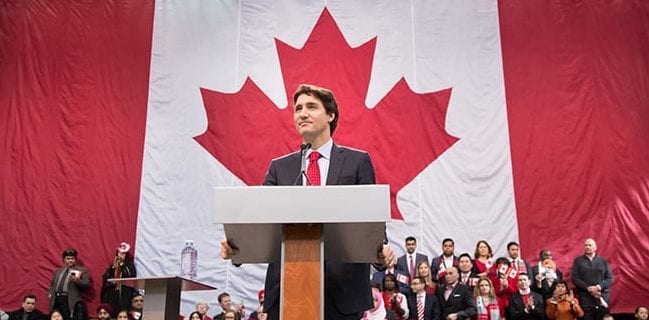 So I voted Liberal. What did that accomplish?
So I voted Liberal. What did that accomplish?
The 33.1 per cent of the 66 per cent of Canadian voters who managed to vote in the 2019 federal election gave the Liberals 157 seats, or 46.4 per cent of the 338 seats in the House of Commons. Clearly first past-the-post system has its advantages. The Liberal’s proportional share of seats would have been 112.
Consider how you would feel if you voted Conservative, had a plurality of the votes cast (34.4 per cent) and your party came second with a seat tally of 121. (Your proportional share would have been 116 seats.)
Or consider if you were among the 6.5 per cent of voters who voted Green. You’d have just three seats when your proportional share would have been 22.
What happened to the notion of representation by population, you might ask?
It certainly seems probable that the concept of proportional representation will once again have strong appeal to many voters and the Liberals will need to act on it.
As a Liberal voter, it’s also interesting to see where the party elects its members. Notably not on Vancouver Island, Alberta or Saskatchewan. Certainly the Prairie middle of the country bears some resemblance to the Red Zone in the United States, where older, white, rural Republicans dwell in large numbers in small towns. Think of both countries as having a conservative centre and largely liberal coasts.
An Indigenous northern friend noted that he also saw a connection between oil pipelines, oil wells, oil sands and the old industrial economy, and Canadian Conservative party strongholds. He further speculated that there may be a connection between what he calls “old and new tech zones,” with Liberal voters clustering in new tech centres promoting financial technology, artificial intelligence, social media and gaming startups.
This is continuing good news for Liberals. However, to improve their base in the Prairie nether regions especially will be a vexing task requiring very high levels of political acumen.
It’s also hard to look at the Liberal seat capture in the Greater Toronto Area and not see a connection between new job creation, the financial hub of the country and Liberalism. There’s a long-standing tradition of sourcing Canada’s finance ministers from the region, which is home to one in six Canadians. A commensurate and continuing focus on the region will need to be a strong suit of the new Liberal minority government.
Turning our attention to Quebec, we heard Bloc Quebecois Leader Yves-Francois Blanchet speak of his party’s willingness to work with the Liberals on policy and legislation beneficial to Quebec, but not on external matters like Alberta pipelines to tidewater. Especially Alberta oil pipelines running through Quebec.
With 7.7 per cent of the popular vote, and 32 seats to show for it, the Bloc would have earned 26 seats in a proportionally-representative House of Commons.
The prime minister would be well advised to handle the Bloc with care, as it may represent a return of nascent Quebec separatism. It’s the only nationally recognized Canadian political party with a solitary provincial base, which seems odd in a federal state.
Eleven Indigenous candidates were elected: five First Nations, four Metis and two Inuit.
The NDP saw Niki Ashton (First Nations) re-elected in Churchill-Keewatinok, Leah Gazan (First Nations) win in Winnipeg Centre, Mumilaaq Qaqqaq (Inuit) in Nunavut and Charlie Angus (First Nations) re-elected in Timmins-James Bay.
The majority of Indigenous candidates elected were Liberal incumbents, including Vance Badawey (Metis) in Niagara Centre, Yvonne Jones (Inuit) in Labrador, Michael McLeod (Metis) in the Northwest Territories, Dan Vandal (Metis) in Saint Boniface-Saint Vitale and Marc Serre (Metis) in Nickel Belt.
Newcomer Liberal Jaime Battiste (First Nations) won in Sydney-Victoria.
One-time Liberal Jody Wilson-Raybould (First Nations), now an independent, was re-elected in Vancouver Granville.
Presumably the Liberals can now work with this caucus to connect Canada’s climate crisis planning and programming more directly to Indigenous knowledge and awareness about climate impacts and their abatement. Many senior environmentalists (notably David Suzuki) see this as a wise and insightful move.
Overall, the diversity and complexity of Canadian federal politics echoes through the 2019 general election results.
To make sense of the contradictions and conflicts apparent on the electoral map will require a sense of statesmanlike conduct not often seen in recent years. Let’s hope that diplomacy reminiscent of former prime minister Lester Pearson can be quickly resurrected and deployed, to the Prairies first.
The next four years will be that kind of challenge.
Mike Robinson has been CEO of three Canadian NGOs: the Arctic Institute of North America, the Glenbow Museum and the Bill Reid Gallery. Mike has chaired the national boards of Friends of the Earth, the David Suzuki Foundation, and the Canadian Parks and Wilderness Society. In 2004, he became a Member of the Order of Canada.
The views, opinions and positions expressed by columnists and contributors are the author’s alone. They do not inherently or expressly reflect the views, opinions and/or positions of our publication.

